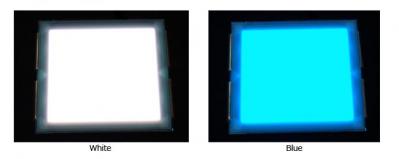According to the Nikkei Asian Review, Konica Minolta and Pioneer are in talks to merge their OLED lighting business. According to the report, the two companies are finalizing the agreement, and will setup a new 50:50 joint venture in the spring.

Both companies are producing OLEDs, and the two production facilities will still be owned by the parent companies - but the OLED R&D and sales operations and will be spun-off to a new company.
The report further says that Konica and Pioneer aim to focus on the automotive OLED lighting market, with taillights and interior lighting as possible applications. The new company will draw from Konica's flexible OLED lighting and materials expertise, and Pioneer's OLED technologies and automotive business network. The two companies aim to reach 25 billion yet ($220 million) in annual sales in the "medium term".
In March 2014 Konica Minolta announced that it is starting to construct a R2R flexible OLED lighting fab with plans to start production in the fall of 2014. This fab entered production later than planned, but it has yet to reach real mass production capabilities. Konica invested ¥10 billion (almost $100 million) in this fab, which was supposed to have a monthly capacity of a million panels. KM's fab produces both white and color-tunable flexible panels. Konica Minolta also holds the world's OLED efficiency record with a 139 LM/W panel - but this is a lab result that is not easily transferred to mass produced panels.

Pioneer's Verbatim started to distribute color-tunable panels produced by Mitsubishi and Pioneer back in May 2011 (we posted a hands-on review of one in 2012) - producing using an evaporation process. In early 2014, Pioneer and Mitsubishi Chemical announced that they began to mass produce OLED lighting modules made with the wet coating process - but these were not color tunable panels.
Pioneer and Mitsubishi also developed a color-tunable and dimmable OLED lighting panel produced using Mitsubishi's wet-coating process, and the companies say that this panel can be produced for less than one-third of the cost of OLEDs made with regular evaporation-based production methods.

Mitsubishi and Pioneer established a company (called MC Pioneer OLED Lighting Corporation) to handle sales and marketing of OLED panels, it's not clear what will be the fate of MCPOLC now.

